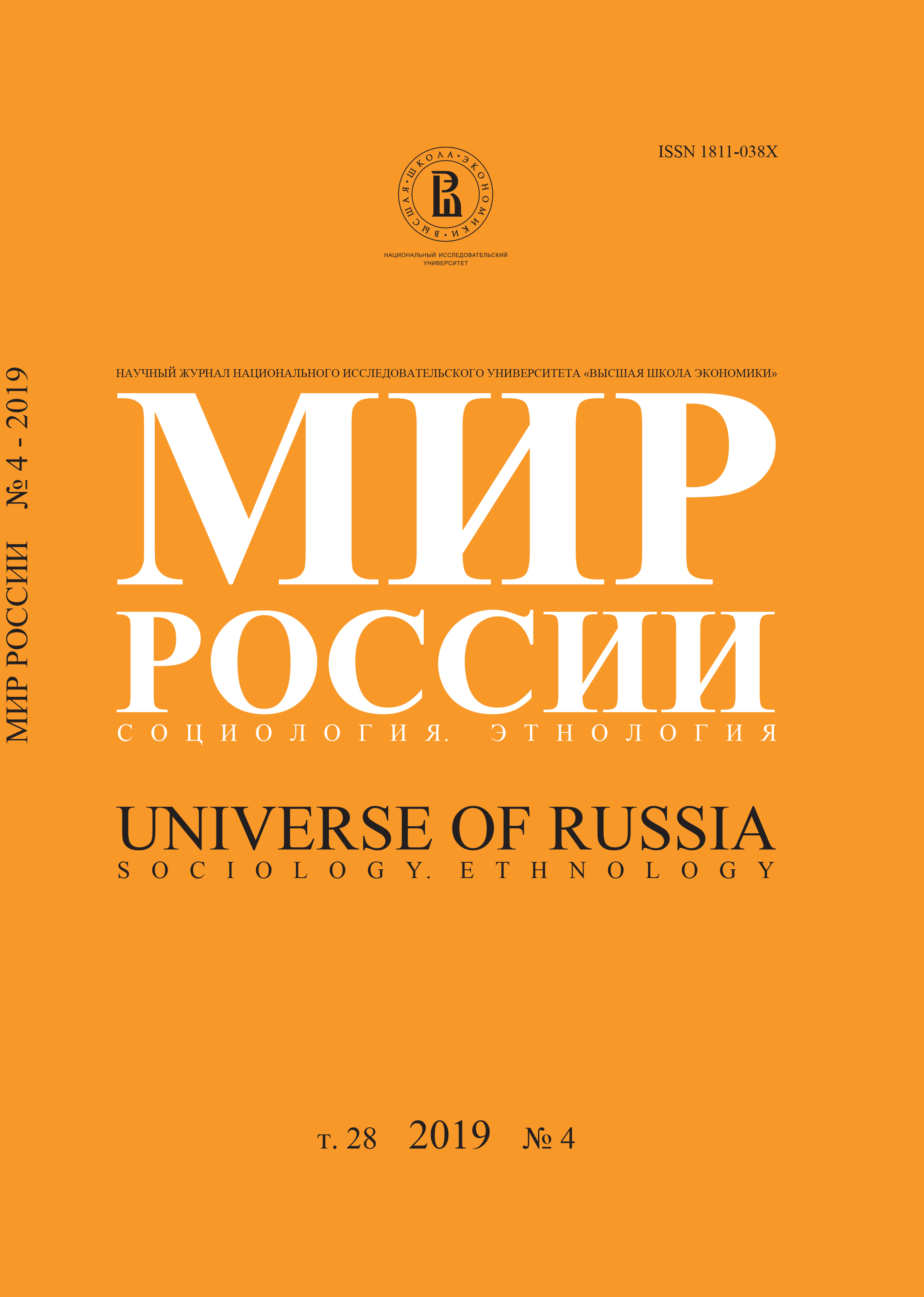A Synthetic Image of Russia-Eurasia
Book Review: Savitsky P.N. (2018) The Scientific Tasks of Eurasianism. Articles and Letters, Moscow: A. Solzhenitsyn, Vikmo-M (in Russian).
Abstract
Citation: Vakhitov R. (2019) A Synthetic Image of Russia-Eurasia. Mir Rossii, vol. 28, no 4, pp. 193–200 (in Russian). DOI: 10.17323/1811-038X-2019-28-4-193-200
Russian studies are regaining popularity in social science research. However, defining this subject is more problematic than ever. The question “what is Russia?” is not a simple one and involves a whole range of philosophical, geopolitical and cultural debates and it raises further questions about the relationship between mental constructions and reality, about the natural boundaries and the ethnic composition of civilizations. Do Ukraine and Central Asia belong to Russia as a civilization? What unites the various phenomena of Russian civilization? Is Russia a civilization of Russians or of all peoples living on its territory? Russian Eurasianism offers specific answers to these questions, and the scientific aspects of the theories of Eurasians are reflected in the book under review.
The book is a collection of articles by Savitsky written in the 1920s and 1930s, and includes not only pieces on Russian studies, but also on Russian history, literature and Stalinist USSR, as well as the correspondence of Savitsky with Pyotr Suvchinsky.
Savitsky developed a doctrine of the ideal substance of Russia-Eurasia called eidos, i.e. a unity of economic, cultural and political phenomena setting the “natural boundaries” separating Russia-Eurasia from Europe and Asia. The content of Russian civilization can change (for example, in ancient times it was not so much a civilization of Slavs as of nomadic peoples), but its structural features, its ideal basis remains invariant. Later articles by Savitsky with his assessment of the Stalinist “national turn” are of particular interest. Savitsky ironizes the fact that the front pages of “Pravda” started to resemble the publications of Eurasians. He welcomes some weakening of the Euro-centrism in Soviet ideology, the recognition of the significance of classical Russian culture, but at the same time blames Stalin’s leadership for a lack of creativity and a reliance on the dogmas of old Russian nationalism. Savitsky further argues that genuine creativity is impossible in an atmosphere of non-freedom and repression, which prevailed in the Soviet Union in the 1930s. Finally, the correspondence between Savitsky and Suvchinsky facilitates the understanding of the relations between members of the Eurasian movement, their theoretical fusion and disagreements, and thus completes the image of Eurasianism as an intellectual movement. The collection is preceded by a thorough introductory article by a prominent scholar of Russian Eurasianism K.B. Yermishina, who also owns the credit for compiling the book.






